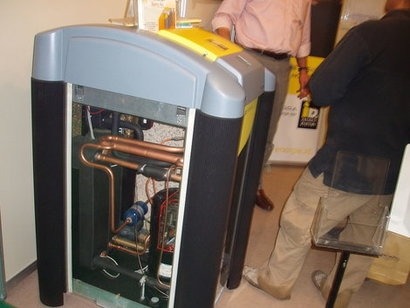
The Pan-European Thermal Atlas (Peta4), launched in Brussels, is an interactive online map of the heating and cooling demand, efficiency and supply in Europe. Created by the Heat Roadmap Europe (HRE) project, it provides visual and technical data for heating and cooling projects, giving users an appropriate analysis tool and easier access to relevant data.
“For years, power plants, industry, and waste incinerators all across Europe have been throwing away enormous quantities of heat and for the most part, this has gone unnoticed” said David Connolly, HRE project coordinator. “Peta4 enables policymakers, planners, suppliers and researchers to identify hotspots so they can replace the energy created by fossil fuel boilers with this excess heat instead. It’s amazing how much heat is being wasted in cities that currently spend millions on natural gas to heat their buildings. This tool will help save money, carbon emissions, and energy consumption. Cities can meet their EU energy targets while also cutting costs for consumers”.
Peta4 covers the 14 EU member states that are part of the Heat Roadmap Europe project. Developed by project partners at Halmstad University, European University Flensburg and Aalborg University, it creates maps with specific and realistic data on the location and scale of heat demand and excess heat, which will facilitate the development of energy system solutions across Europe.
Users can search for a specific location, to analyse the feasibility of a project in an area and assess where, for example, district heating or heat pumps could be economically viable. Peta4 contains a 100 m resolution grid of the modelled heat demand in 2015, which visualises where district heating networks could be implemented. This is combined with a layer presenting the excess heat supply available from various large-scale plants and industries, to show how these new district heating networks could supply their heat demand.
The maps use openly accessible spatial geo-data from the European Commission, the European Environmental Agency and Eurostat. They are produced and funded under the framework of the European Union's Horizon 2020 research and innovation programme.
For additional information:

